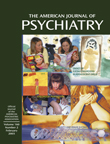To the Editor: We are pleased for this opportunity to respond to Dr. Muller. First, we want to clarify any perception that we identified causative relationships between brain changes and antidepressant response; we did not. We described an association between specific brain change patterns and a change in mood state in depressed patients that is common to treatment with either placebo or active medication. It is unfortunate that our concluding hypothesis, not only based on the findings of the study but considered in the context of other published studies examining pharmacological, cognitive, and somatic treatments, should lead to a critique that negates the value of imaging altogether in the study of major depression. Dr. Muller’s comments suggest an underlying bias not consistent with the wealth of available scientific evidence.
While the cause of depression at the molecular and cellular levels remains unknown, we have learned much by studying brain changes induced by antidepressants. Monoamine reuptake inhibition, pre- and postsynaptic receptor regulation, transcription, and trophic changes are all described, and some of these can be assayed with functional neuroimaging
(1). Similarly, net excitation and inhibition of specific neural pathways have been explored by using pharmacological probes and electrophysiological techniques, providing potential mechanisms for interpreting functional imaging findings identified by using PET as well as functional magnetic resonance imaging
(2,
3). These basic scientific advances are of direct relevance to depression research and are likely to affect new treatment development.
Dr. Muller’s characterization of functional brain imaging as “virtual reality,” particularly his inaccurate description of the techniques used, reveals a lack of understanding of the physiological principles underlying this and other neuroimaging techniques. This explains his additional comments regarding QEEG and his incredulity that there might be differences between two distinct imaging studies of placebo response. That two different methods have identified measurable brain changes at all should be cause for celebration. To understand these differences requires direct comparison of the two methods in the same patients.
We are concerned with Dr. Muller’s remark that we believe we have somehow closed the mind-brain gap. In regard to his statement that we somehow posit the primacy of the brain over the mind, we emphasize that our study was designed with the assumption that mind and brain are inseparable. While complicated, careful hypothesis-driven experiments can address aspects of complex behavior typified by a disorder like depression.
Finally, Dr. Muller’s contention that much of natural science travels poorly along the mind-brain gap and his not-so-subtle message that it might be better not traveled at all is disturbing. To reduce the study of a clinical disorder to a philosophical construct broadly captured by the catch phrase “the mind-brain problem” or “consciousness” is not only to miss an important opportunity for potential scientific advance but also to reveal a bias that only undermines ongoing efforts to enhance communication between the neuroscience and psychotherapy communities that is necessary to ensure the best possible care of patients with depression and other psychiatric disorders. We look forward to future experiments in which areas of overlap between these complementary disciplines are explicitly examined
(4).

